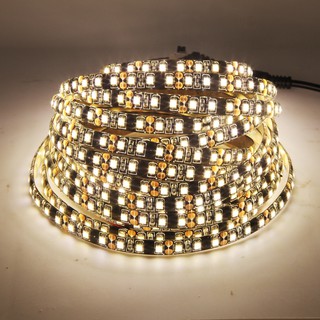The lighting in an office plays a crucial role in the productivity and well-being of employees. While poor lighting can cause eye strain, headaches, and fatigue, good lighting can improve mood, reduce stress, and boost productivity. In this article, we will explore the best office lighting options to enhance employee productivity and provide valuable tips for creating a comfortable and productive work environment.
Natural Light
Natural daylight or lighting that mimics it, such as a cool white LED light, is widely considered the best lighting option for employee productivity. This type of lighting provides a bright and crisp light that helps employees feel more alert and energized. Furthermore, exposure to natural daylight has been shown to improve mood, reduce stress, and increase productivity.
Read more: Can I control the LED strip lights with a remote?
However, it may not always be feasible to have ample natural light in an office setting. In such cases, a cool white LED light can serve as an excellent alternative. Cool white LED lights have a color temperature between 5000K and 6500K, similar to natural daylight. These lights are commonly used in offices as they provide a bright and neutral light that is easy on the eyes and promotes better concentration.
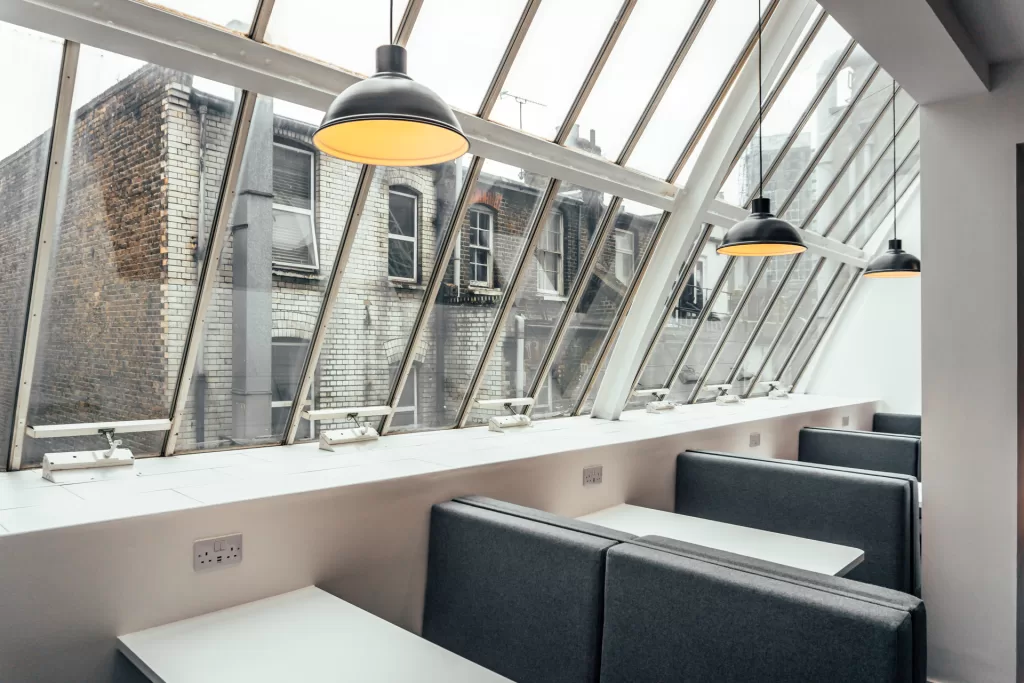
Adjustable Lighting
Apart from the right type of lighting, adjustable lighting options are essential for employee productivity. Providing dimming controls or other adjustable lighting features allows employees to customize their lighting preferences and create a comfortable work environment. For instance, employees may prefer dimmer lighting later in the day when they are feeling tired and need to relax their eyes. This is where circadian lighting can significantly contribute to employee well-being and productivity.
Read more: Is it safe to leave the LED strip lights on overnight?
Circadian lighting is a lighting design that aims to mimic the natural light and dark cycles that regulate our internal body clock. By aligning with these natural rhythms, circadian lighting offers several benefits to employee productivity:
Regulating the sleep-wake cycle: Exposure to blue-enriched light in the morning helps reset the body's internal clock, promoting wakefulness and alertness during working hours. Warm, reddish light in the evening promotes relaxation and prepares the body for sleep, leading to better quality sleep and improved productivity during the day.
Reducing fatigue and increasing alertness: By providing the right kind of light at the right time, circadian lighting helps employees maintain their energy levels and focus throughout the day, leading to higher productivity and improved job performance.
Task Lighting
The placement of lighting in the office is equally crucial for productivity. Evenly distributing lighting throughout the space helps reduce shadows and glare. Combining overhead lighting with task lighting, such as desk lamps or under-cabinet lighting, ensures adequate illumination for specific tasks.
Read more: Is it safe to leave the LED strip lights on overnight?
Additionally, when selecting lighting, it's essential to consider the nature of work being done in the office. Employees who spend most of their time working on computers may benefit from lighting with a lower color temperature to reduce eye strain. On the other hand, employees who need to focus on meticulous tasks may benefit from brighter lighting.
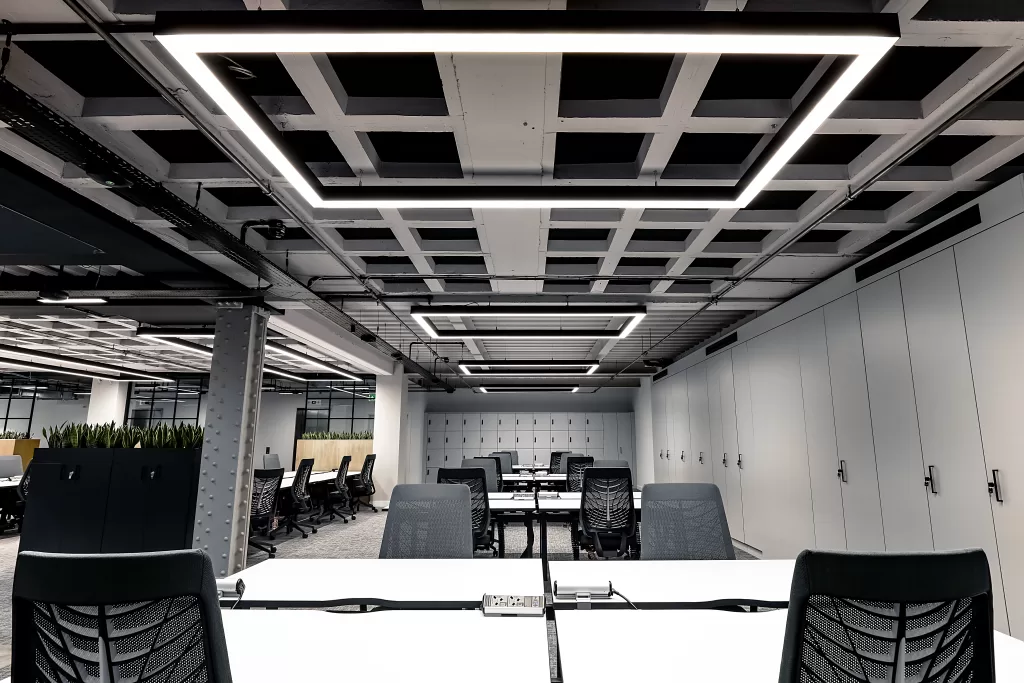
Acoustic Lighting
Acoustic lighting combines sound-absorbing materials with LED lights to create a comfortable and efficient working environment. By reducing noise levels in the workspace, acoustic lighting helps lower stress and fatigue, leading to improved communication among employees. Overall, it enhances the work environment, positively impacting productivity.
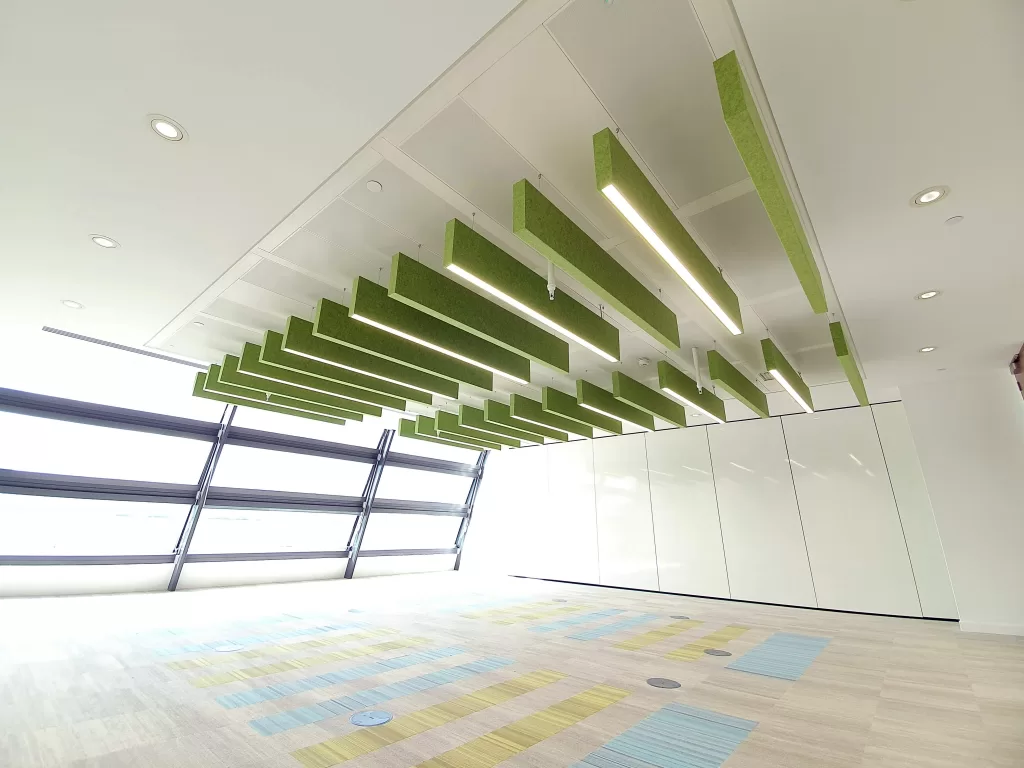
Biophilic Lighting
Biophilic lighting incorporates natural elements such as plants, wood, and stone into the workspace, creating a nature-inspired environment. This type of lighting design offers several benefits to employee productivity:
Improved mood and reduced stress levels: Exposure to nature has been proven to increase positive emotions and reduce negative ones, including anxiety and depression. By bringing elements of nature indoors, biophilic lighting creates a calming and relaxing environment, promoting better mental health and higher levels of productivity.
Regulation of circadian rhythms: By mimicking natural lighting conditions, biophilic lighting can help regulate the body's circadian rhythms. This improves sleep patterns and energy levels throughout the day, leading to increased alertness and productivity during working hours.
It's crucial to gather feedback from employees and adjust the lighting accordingly. Different people have various preferences when it comes to lighting, so it's important to consider their feedback and make necessary changes. Encouraging employees to take breaks and step outside for some natural daylight exposure can also be beneficial.
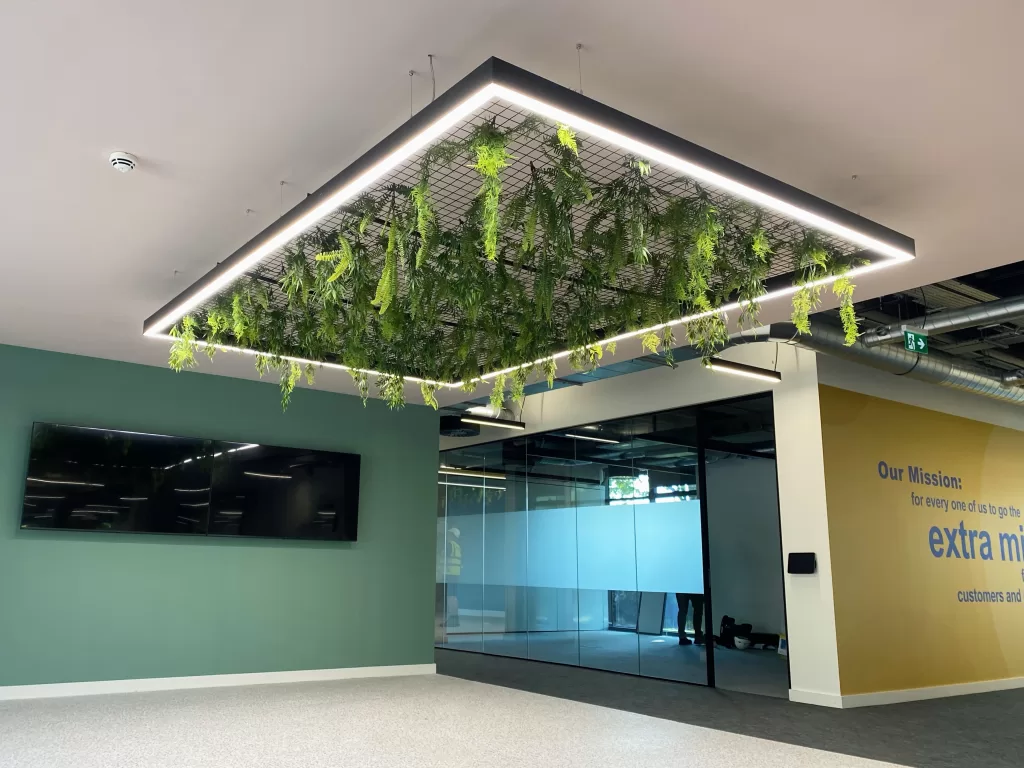
Frequently Asked Questions
1. How does natural light impact employee productivity?
Exposure to natural light improves mood, reduces stress, and increases productivity among employees. It helps them feel more alert and energized.
2. Can LED lights mimic natural daylight?
Yes, cool white LED lights with a color temperature between 5000K and 6500K can mimic natural daylight. They provide a bright, neutral light that is easy on the eyes and improves concentration.
3. What is circadian lighting?
Circadian lighting aims to simulate the natural light and dark cycles that regulate our body's internal clock. It helps regulate the sleep-wake cycle and reduces fatigue, leading to increased productivity.
4. How does task lighting contribute to employee productivity?
Task lighting, in combination with overhead lighting, ensures adequate illumination for specific tasks. It reduces shadows and glare, promoting better focus and work efficiency.
5. What is acoustic lighting, and how does it impact productivity?
Acoustic lighting combines sound-absorbing materials with LED lights to create a less noisy workspace. By reducing noise levels, it lowers stress and fatigue, leading to improved communication and productivity.
6. How does biophilic lighting enhance employee productivity?
Biophilic lighting incorporates natural elements into the workspace, improving mood, reducing stress, and regulating circadian rhythms. It creates a calming and nature-inspired environment that positively impacts employee mental health and productivity.
By incorporating the best office lighting practices, such as natural light, adjustable options, task lighting, acoustic lighting, and biophilic lighting, employers can create a comfortable and productive work environment. By doing so, they enable their employees to stay focused, energized, and productive throughout the day.
